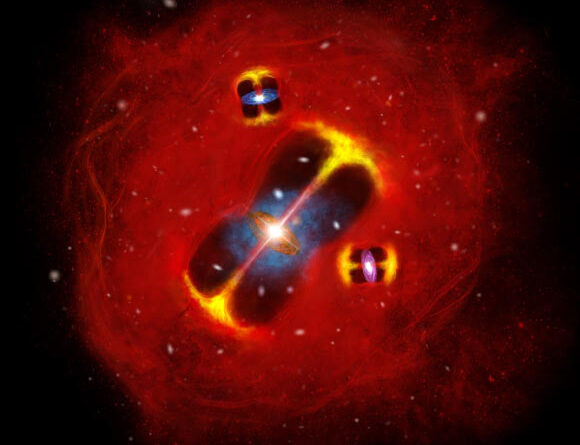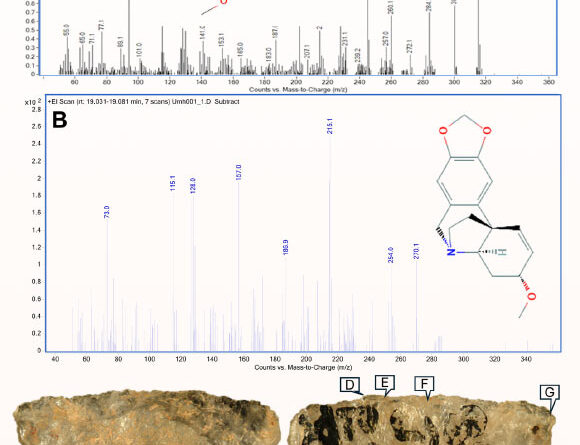
The Altar Stone, a 6-ton sandstone megalith that sits at the center of Stonehenge’s iconic stone circle, was sourced at least 750 km from its current location, according to new research led by Curtin University archaeologists.
Stonehenge, the Neolithic standing stone circle located on the Salisbury Plain in Wiltshire, England, offers valuable insight into prehistoric Britain.
Construction at Stonehenge began as early as 3000 BCE, with subsequent modifications during the following two millennia.
The megaliths of Stonehenge are divided into two major categories: sarsen stones and bluestones.
The larger sarsens comprise duricrust silcrete predominantly sourced from the West Woods, Marlborough, approximately 25 km north of Stonehenge.
Bluestone, the generic term for rocks considered exotic to the local area, includes volcanic tuff, rhyolite, dolerite and sandstone.
The central megalith of Stonehenge, the Altar Stone, is the largest of the bluestones, measuring 4.9 x 1 x 0.5 m, and is a recumbent stone, weighing 6 tons and composed of pale green micaceous sandstone with distinctive mineralogy.
In new research, Curtin University Ph.D. student Anthony Clarke and his colleagues studied the age and chemistry of mineral grains within fragments of the Altar Stone.
“Our analysis of the age and chemical composition of minerals within fragments of the Altar Stone matched it with rocks from northeast Scotland, while also clearly differentiating them from Welsh bedrock,” Clarke said.
“We found specific mineral grains in the Altar Stone are mostly between 1 to 2 billion years old, while other minerals are around 450 million years old.”
“This provides a distinct chemical fingerprint suggesting the stone came from rocks in the Orcadian Basin, Scotland, at least 750 km away from Stonehenge.”
“Given its Scottish origins, the findings raise fascinating questions, considering the technological constraints of the Neolithic era, as to how such a massive stone was transported over vast distances around 2600 BCE.”
The layout of Stonehenge and the appearance of the Altar Stone. Image credit: Clarke et al., doi: 10.1038/s41586-024-07652-1.
“The findings had significant implications for understanding ancient communities, their connections, and their transportation methods,” said Curtin University’s Professor Chris Kirkland.
“Our discovery of the Altar Stone’s origins highlights a significant level of societal coordination during the Neolithic period and helps paint a fascinating picture of prehistoric Britain.”
“Transporting such massive cargo overland from Scotland to southern England would have been extremely challenging, indicating a likely marine shipping route along the coast of Britain.”
“This implies long-distance trade networks and a higher level of societal organization than is widely understood to have existed during the Neolithic period in Britain.”
“We have succeeded in working out, if you like, the age and chemical fingerprints of perhaps one of the most famous of stones in the world-renowned ancient monument,” said Aberystwyth University’s Professor Richard Bevins.
“While we can now say that this iconic rock is Scottish and not Welsh, the hunt will still very much be on to pin down where exactly in the north-east of Scotland the Altar Stone came from.”
“The findings were genuinely shocking, but if plate tectonics and atomic physics were correct, then the Altar Stone is Scottish,” said University College London’s Dr. Robert Ixer.
“The work prompts two important questions: why and exactly how was the Altar Stone transported from the very north of Scotland, a distance of more than 70 km, to Stonehenge?”
The findings were published in the journal Nature.
_____
A.J.I. Clarke et al. 2024. A Scottish provenance for the Altar Stone of Stonehenge. Nature 632, 570-575; doi: 10.1038/s41586-024-07652-1
As an Amazon Associate I earn from qualifying purchases.







